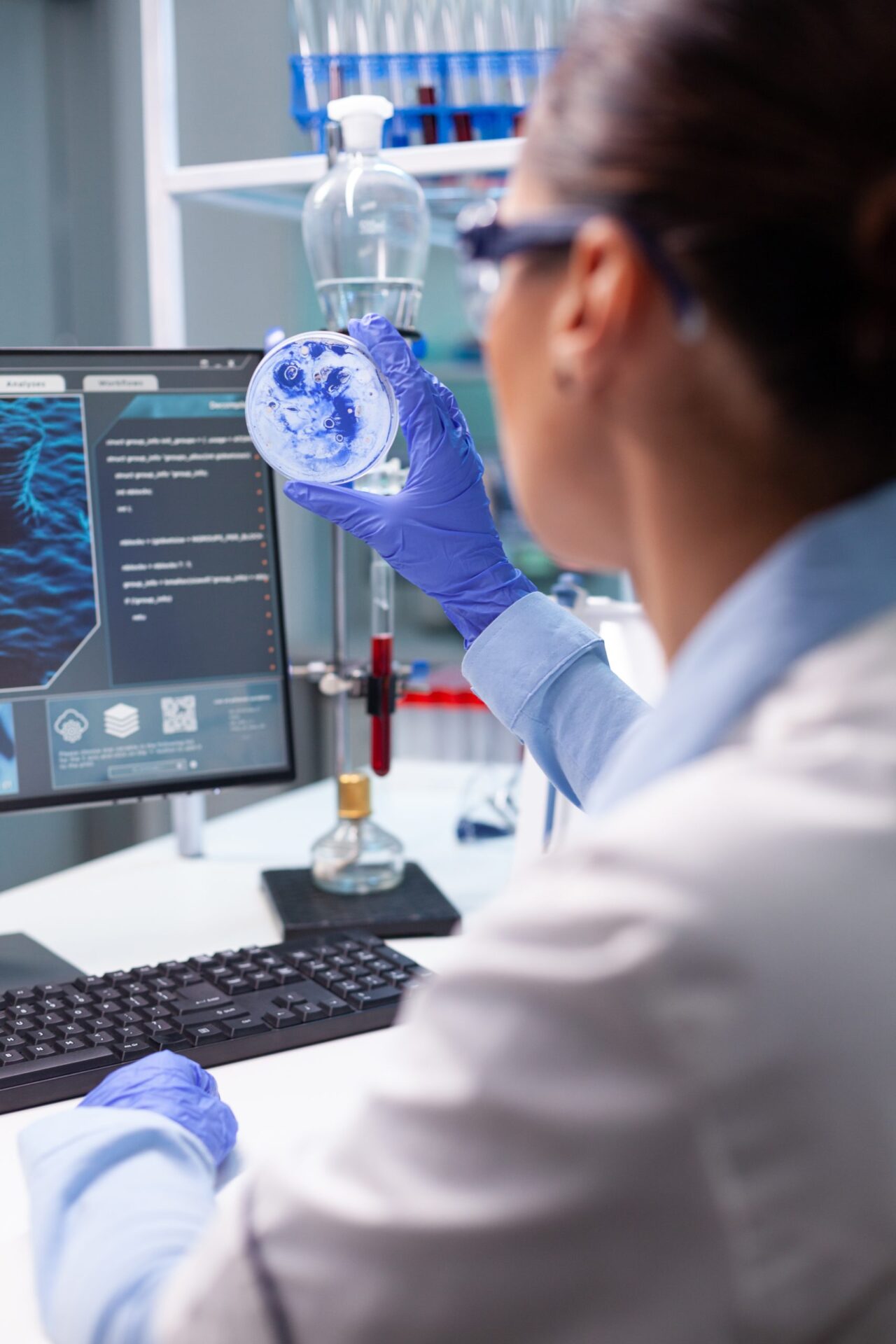An ELISA microplate reader is a spectrophotometer designed to read the results obtained from the ELISA, this technique is used in laboratories to determine the presence of specific antibodies or antigens in samples. The technique is based on the detection of an antigen or antibodies captured on a solid surface using direct or secondary, labeled antibodies, which produce a reaction whose product can be read by the spectrophotometer.
The ELISA microplate reader is used when reading the results of the ELISA technique, since it has the property of detecting the light emitted by samples that have been pipetted into a microplate, thus determining the presence of specific antibodies or antigens present in a sample. These readers are able to analyze 96 or more microplates wells with samples, being very useful in laboratories, as they allow reducing the consumption of reagents and samples, offering a great yield.
How does an ELISA microplate reader work?
The ELISA microplate reader is considered to be a specialized spectrophotometer. Unlike the conventional spectrophotometer that provides readings over a wide range of wavelengths, the microplate of the reader has diffraction filters or grids that limit the wavelength range compared to that used in ELISA, usually between 400 nm to 750 nm (nanometers). Although some ELISA readers are able to operate in the ultraviolet range and perform analyzes between 340 and 700 nm.
This microplate reader has an optical system that typically uses optical fibers to deliver light to microplate wells containing the samples. The light beam passing through the sample has a diameter of between 1 and 3 mm. A detection system then detects the light coming from the sample, amplifies the signal and determines the absorbance. A reading system converts it into data allowing interpretation of test results. Some microplate readers use double-light systems.
How do microplates work?
Samples during the ELISA test are placed in specially designed plates (microplates) with a specific number of wells in which the procedure or test is carried out. Generally 8 column plates by 12 rows with a total of 96 wells are common.
There are also plates with a greater number of wells for more specialized applications, as it is advised for such techniques and applications to increase the number of wells (plates of 384 wells) reduce the amount of reagents and samples used and higher yield. The location of the optical sensors of the microplate reader may vary depending on the manufacturer: it can be located above the sample plate, or directly below the wells of the plate.
When is an ELISA microplate reader employed?
The microplate reader is used when reading the results of ELISA tests. This technique has a direct application in immunology and serology. Among other applications, it confirms the presence of antibodies or antigens of an infectious agent in an organism, antibodies of a vaccine or autoantibodies, for example, in rheumatoid arthritis.
Our Kalstein ELISA microplate readers provide the performance you need to solve your analytical challenges. The needs of each laboratory are unique. So you should choose the right microplate reader to fit your needs.
What does Kalstein offer you?
Kalstein is a manufacturer of medical and laboratory equipment of the highest quality and the best technology at the best PRICES in the market, so you can make your PURCHASE confidently with us, knowing that you have the service and advice of a company specialized in the field and committed to provide you with safe, economical and effective options to perform your functions in the right way.
This time we present our Elisa Reader YR05128. This innovative equipment with cutting edge technology has the following features:
- 8-channel optical system, quantitative and qualitative test.
- External jet printer, multi-format patient report
- High-light LED long-life > 100,000 hours
- External computer, large storage capacity for 1000 test items and 1,000,000 results
For more information we invite you to take a look at: HERE

